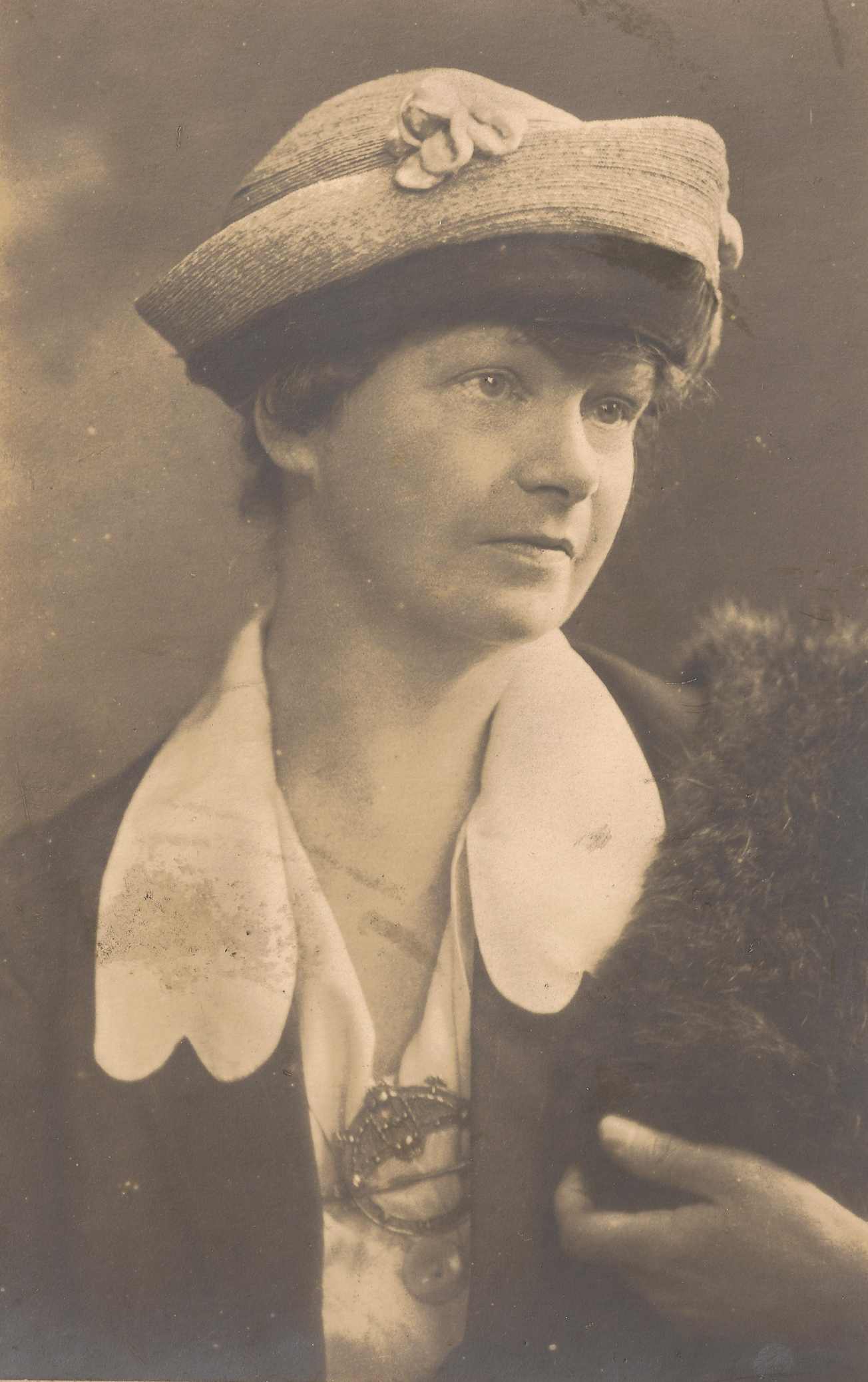
Alice Cashel,
Gaelic League
and republicanism:
She became a
member of the
Gaelic League
(founded 1893).
Her obituary says she was "a founder member of the Gaelic League"
but that seems highly unlikely
(she was age 15 in 1893).
She was a
supporter of
Sinn Fein
as early as her brother-in-law
James O'Mara, around 1907
[Lavelle, 1961].
Living with her father in Cork in 1911 census,
she is at "teacher training college",
speaks Irish (only one in family listed as speaking Irish).
"Miss Cashel" (Alice)
was on
Cork Municipal School of Commerce staff, 1911-1912.
Terence MacSwiney
was also on the staff.
Alice and her sister Kathleen
became great friends with his family,
the Cork republican family,
the MacSwiney's.
This family may be relations of their stepmother Marion McSwiney.
Alice was an
early member of
Cumann na mBan (founded 1914).
She set up the Cork branch of Cumann na mBan
with
Annie MacSwiney
about 1914-15.
She became secretary of the branch.
In 1916 she was living in Limerick.
She took part in plans for the
1916 Rising
in Co.Cork,
but the plans were aborted.
Letter of 17 March 1954
recalls that she was in Ballingeary, Co.Cork,
with Sean O'Hegarty during Easter Week 1916.
She went to America in Aug 1916 and made contact with
John Devoy.
Returned to Ireland in Jan 1917.
She went in 1917 to teach
in
Mary MacSwiney's school,
St. Ita's School for girls, Cork.
In Jan 1918 she was living at her sister's Galway house,
Barfield.
Her brother-in-law, Sinn Feiner
James O'Mara,
paid for her to go help in the
South Armagh by-election
of 2 Feb 1918.
Cumann na mBan organiser:
She was
appointed a full-time organiser of
Cumann na mBan in Feb 1918.
She organised for Cumann na mBan in Co.Donegal in early 1918.
The development of Cumann na mBan in the county dates from her 1918 visit.
She
campaigned for
Arthur Griffith
of Sinn Fein (in jail at the time)
in East Cavan by-election June 1918
(in which Griffith was elected).
On 15 Aug 1918
(incorrectly written in
[BMH]
as 1919)
she held a banned meeting at Clifden, Co.Galway,
which was broken up by the police.
In
[BMH]
she says:
"Orders had been sent from Sinn Fein H.Q. that on the 15th August a manifesto should be read in public by every Sinn Fein club in the country. On the morning of the meeting I was informed by one of the local R.I.C. that if I held the meeting I should be arrested. We held the meeting near the square, it was broken up by the police, the platform planks on barrels being pulled from under our feet. We stayed on until the last plank was taken. Then I reorganised the women in the street and marched them out of the town and held my meeting on the monument base which stands on a hill outside Clifden. While the police followed me the Secretary of the Sinn Fein club finished the reading of the Manifesto. I then had to ?go on the run.?"
She spent much time "on the run" in various safe houses in Co.Galway and Co.Mayo.
Her brother-in-law
James O'Mara
became a member of the first
Dail Eireann
in Jan 1919.
|
War of Independence:
Alice was already "on the run" from the British before the War of Independence started in Jan 1919. She fell into poor health and had to stop her work. In summer 1919 [BMH] she went to live at her sister Agnes' newly-bought Connemara house, Cashel House. James O'Mara went to America in Oct 1919. Agnes would go over later in Apr 1920. Alice stayed in Cashel House.
Jailed briefly in 1920:
Sinn Fein councillor, Vice-Chairman of Galway County Council, 1920-21:
The Dail, as well as taking over local government,
set up a parallel courts system.
Alice
acted as a judge in Sinn Fein courts
in
War of Independence.
She was a "Parish Justice" in Connemara district.
She describes the operation of these underground courts in
[BMH].
Jailed Jan-July 1921:
|
She worked for the Republican side in the Civil War, but does not detail this in
[BMH].
She never married.
She
worked for a time in the Revenue Department,
Dublin Castle.
She lectured in UCG,
possibly taught a subject on the
H.Dip.
course.
See her
argument with Jim Sullivan
about the Blennerhassetts,
sometime before 1935.
She wrote novels.
Author of
The lights of Leaca Bán (1935).
In
later life she lived St.Catherine's, Roundstone, Connemara, Co.Galway.
Think she was there c.1940.
Definitely there in 1950.
See Letter of 12 April 1950
from the Bureau of Military History to her,
thanking her for her statement.
Addressed
to St Catherine's, Roundstone.
See Letter of 17 March 1954
from her.
Sent from Roundstone.
Her nephew Steen O'Mara
(who didn't marry) stayed with her a lot
(according to Muffie de Courcy).
Living Roundstone at death.
She
died 22 Feb 1958, Regional Hospital, Galway,
age 79 yrs
[GROI].
See mass card.
See obituary
in
Irish Press, February 24, 1958.
See
obituary
in
Irish Times,
February 24, 1958.
Funeral 25 Feb, buried in the New Cemetery, Bohermore, Galway.
The Taoiseach and President sent representatives to the funeral.
The
Mayor of Galway
attended.
The Cathaoirleach of the Seanad
Liam O Buachalla
gave an oration.
See
report
in
Irish Press, February 26, 1958.
See
report
in
Connacht Tribune, March 1, 1958.

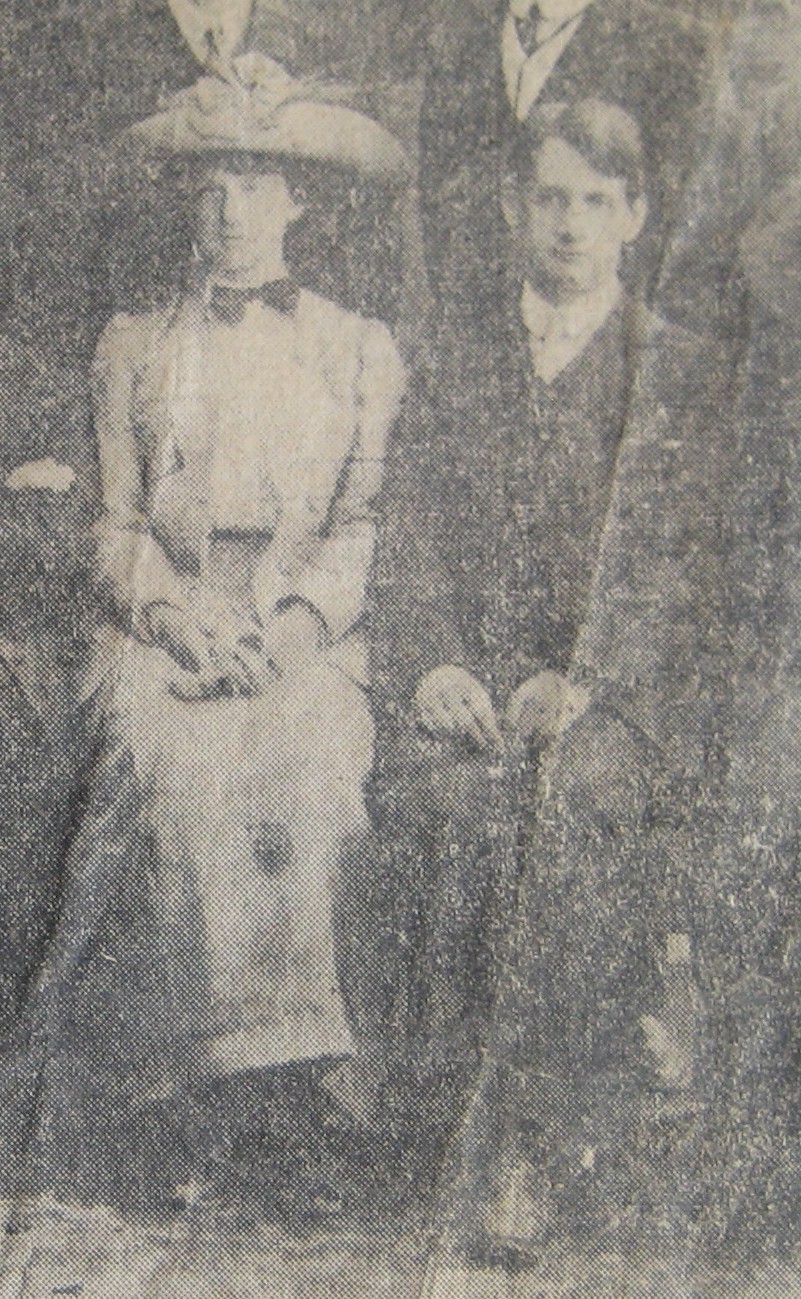
Close-up of "Miss Cashel" and Terence MacSwiney.
Printed in an
unknown later newspaper.
This gives the names.
See full size.
See other shot.
See another copy.
See another copy.
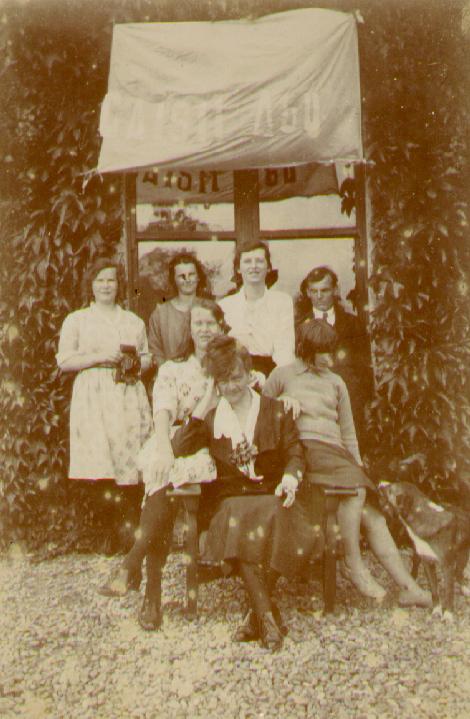
"After Aunt Al's return from jail"
(1920 or 1921),
with the O'Mara's
at
Cashel House.
Think Back (Left to Right): Una,
Maureen, Eileen,
Steen,
and Middle (Left to Right): Sheila, Eithne.
Front: Alice Cashel.

The court-martial of Alice Cashel in Feb 1921.
From
Tuam Herald, February 26, 1921.
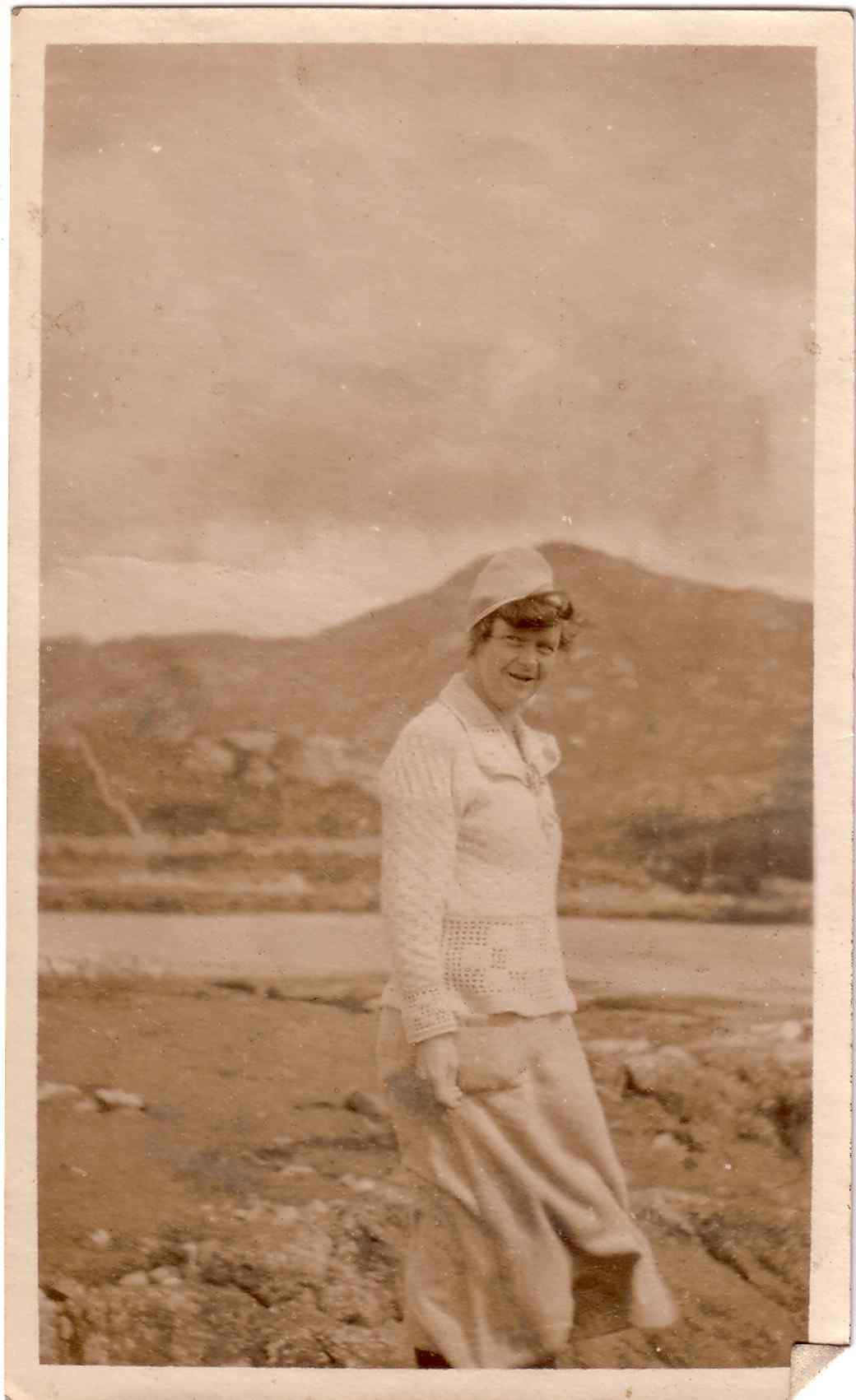
Alice Cashel.
See full size.
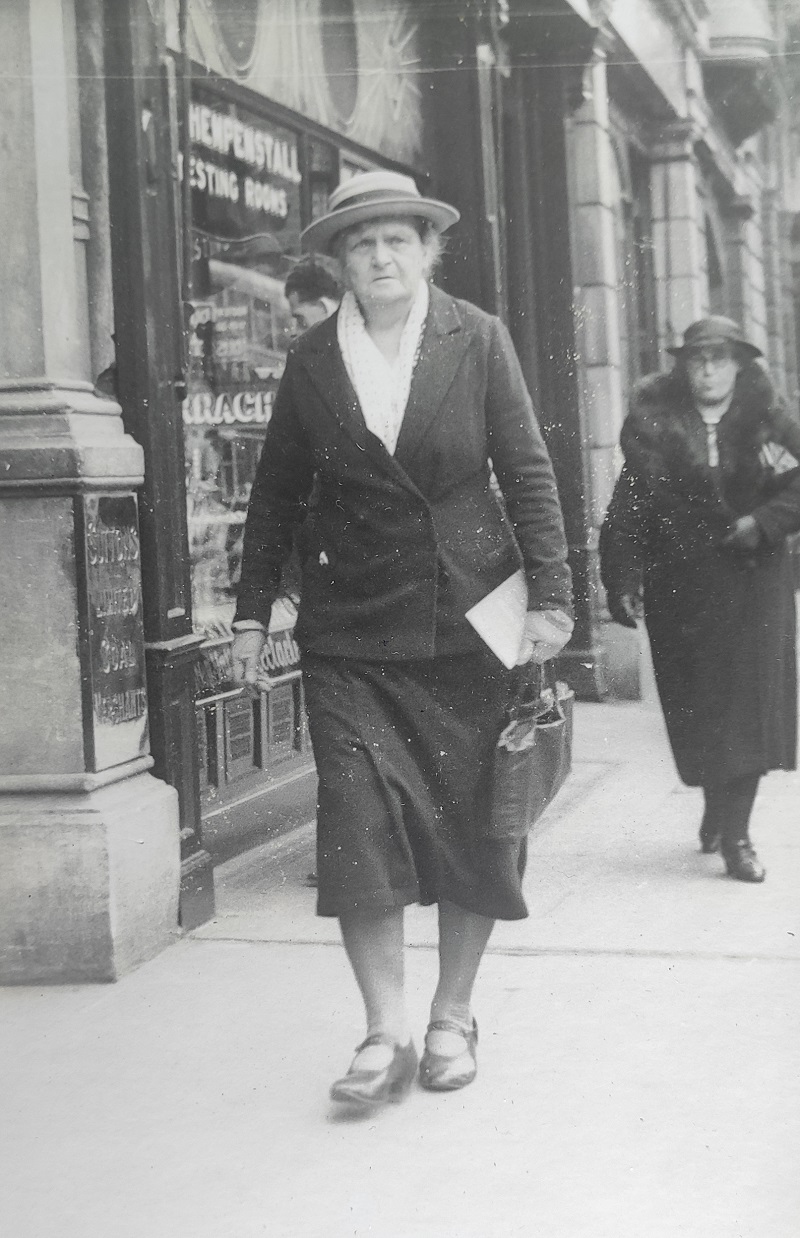
Alice Cashel on a Dublin street.
See larger
and full size.
See other copy.
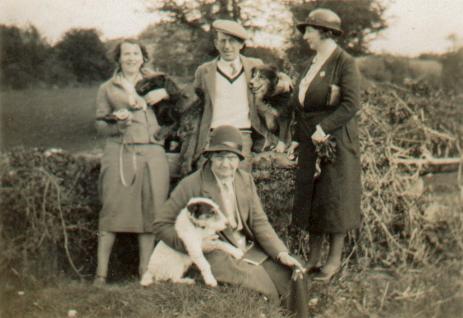
Back: Eithne O'Mara, Dick Humphreys, unknown.
Front: Alice Cashel.
Photo
1932.
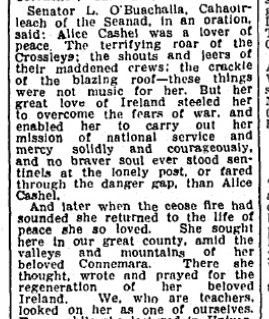
Oration at Alice's funeral in 1958.
From
Irish Press, February 26, 1958.
There was a
Princess Alice
at this time (Queen Victoria's daughter, born 1843, died Dec 1878).
A search of the 1901 census shows many Irish Catholic families of the late 19th century
naming their daughter Alice.
Blen was a loyal enough citizen at this time.
He was a witness for the crown against subversives in 1882.
So maybe the name came from the Royal family.
Which would be ironic, since Alice Cashel became a Sinn Feiner.
But is it possible this name came from Blennerhassett? See the following.

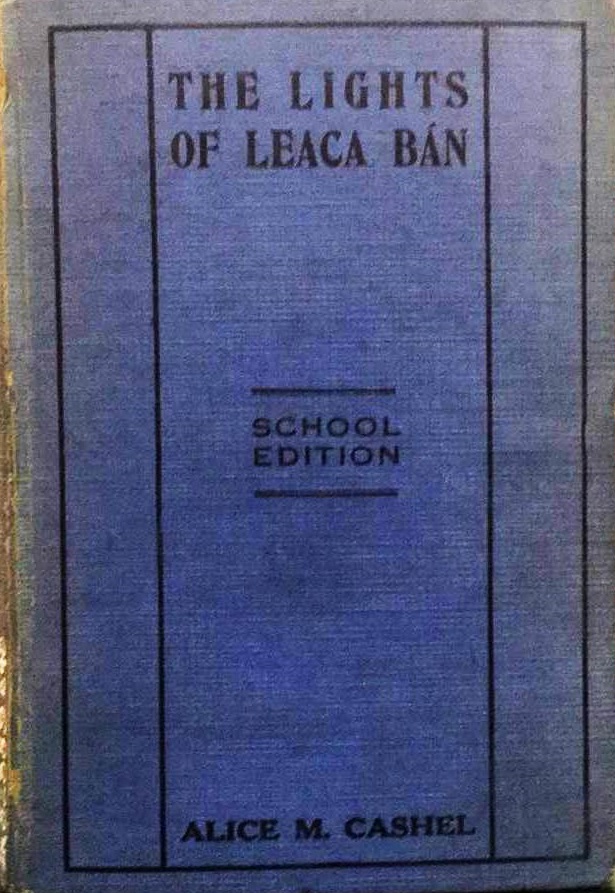
The song
"Leaca Bán" (2015)
by Dundalk trad group Na Tonnta
uses lyrics from Alice Cashel's words.
Click to play.
The house is on the main N-S road in Roundstone village, in the middle of a small block on the W side of the road.
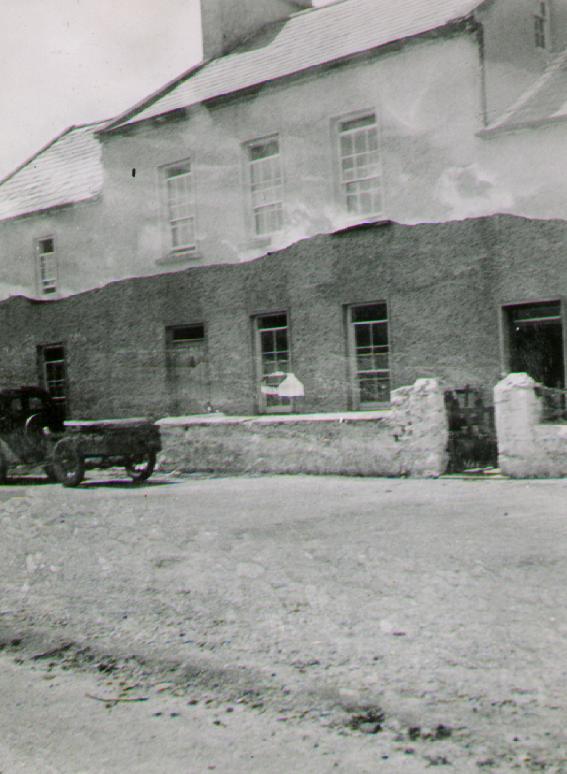

The house today (middle house of block).
The roof is re-built. The neighbouring buildings are re-built.
The door and lower windows are similar.
The wall is similar.
2009 screenshot from
street view.
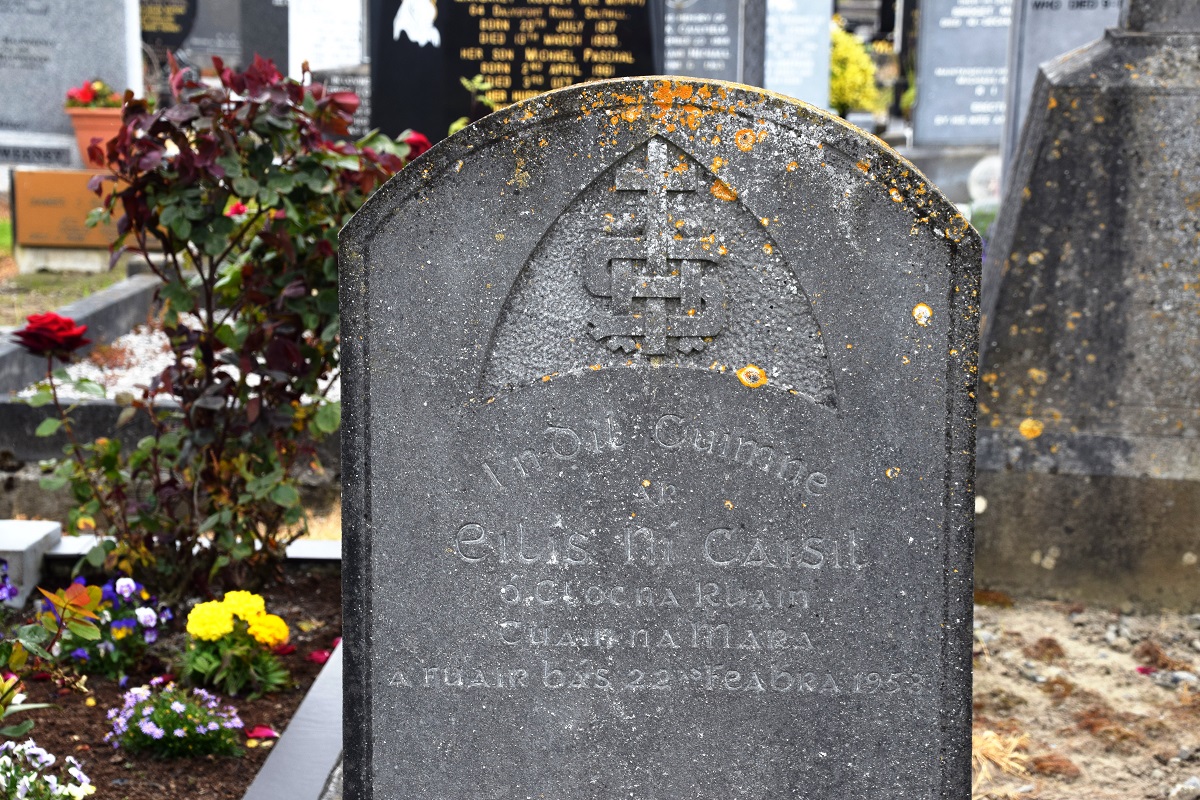
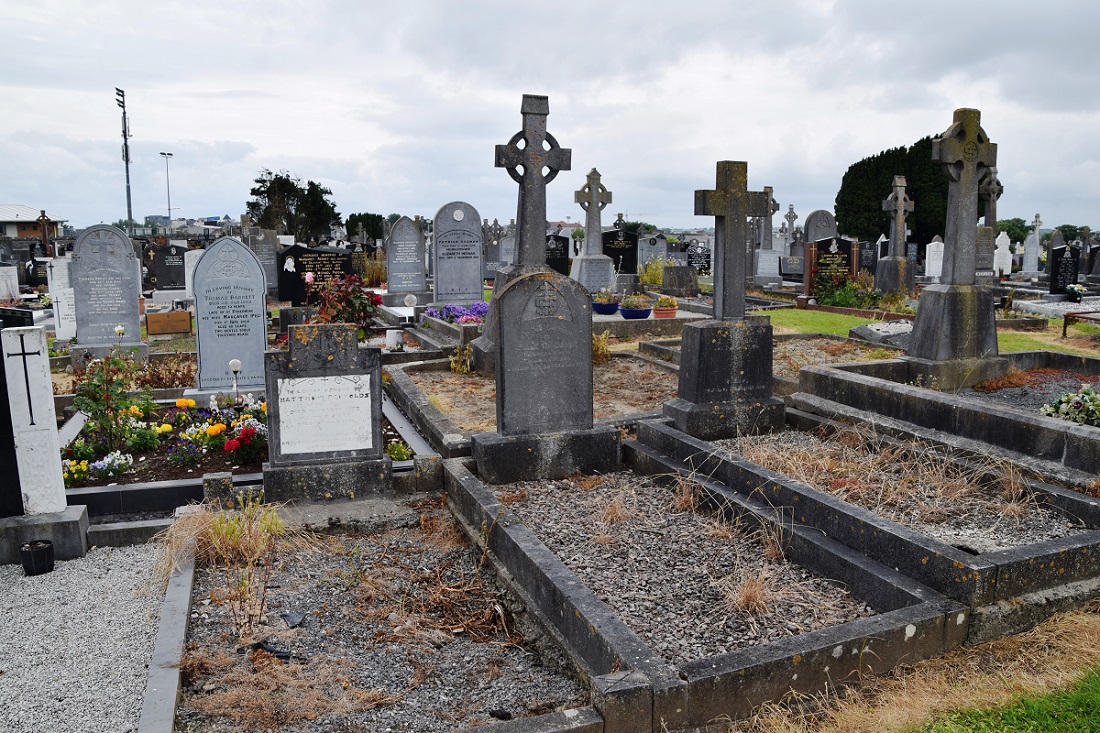
Wider shot showing location of grave.
See larger
and full size.
Photo 2015.
Courtesy of Christine Cozzens.
See other
2015 shot and
other angle.
There was a story
that Alice
lived for a time (maybe later) at a "Cashel Cottage" near Cashel House.
But I cannot identify "Cashel Cottage", or find any contemporary reference to it.
It may be an error.
It seems more likely she lived at Cashel House.
Please donate to support this site.
I have spent a great deal of time and money on this research.
Research involves travel and many expenses.
Some research "things to do"
are not done for years, because I do not have the money to do them.
Please Donate Here
to support the ongoing research and
to keep this website free.